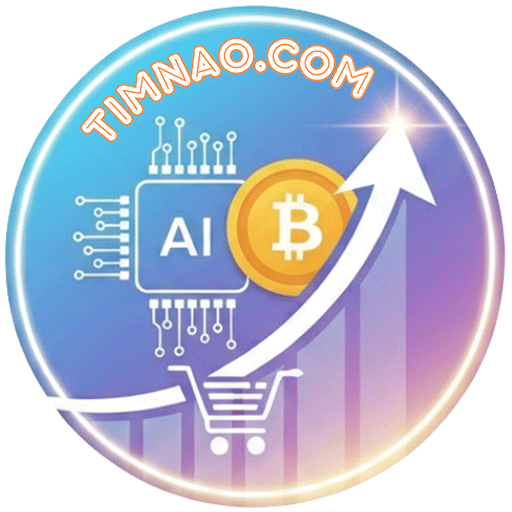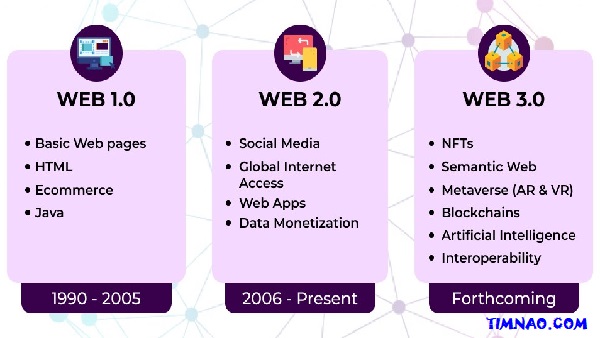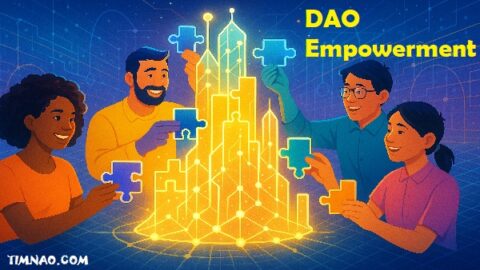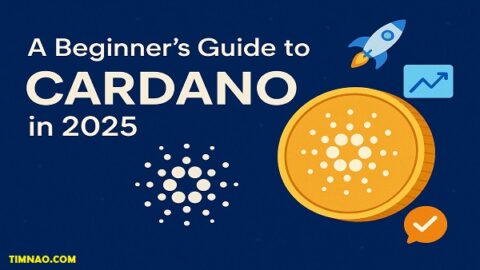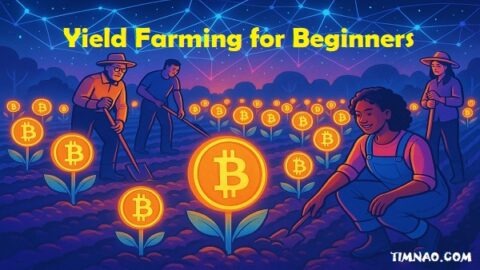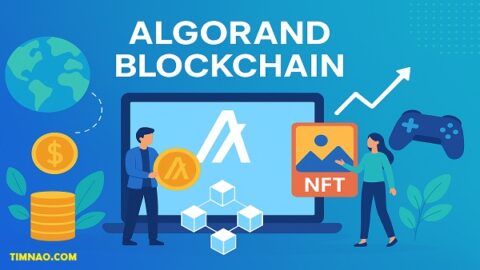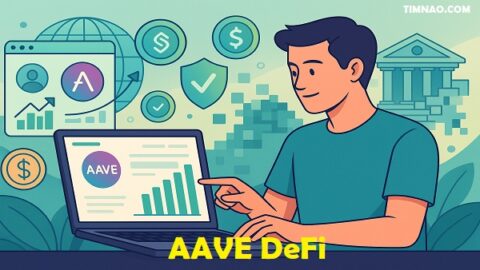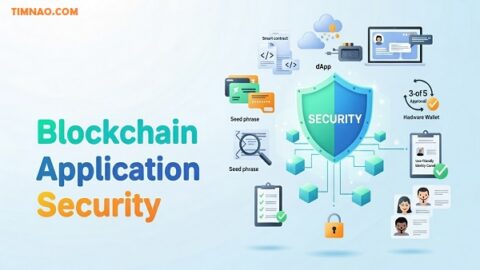Unlock the Astonishing Power of Web3 Explained: Your Ultimate Beginner’s Guide! 🚀
The internet is changing, and a new buzzword, “Web3,” is on everyone’s lips. If you’re feeling a bit lost in the jargon, don’t worry! This guide is your friendly introduction to the exciting world of Web3 explained in simple terms. We’ll explore what this next evolution of the internet means, how it works, and why it’s set to create such an astonishing impact on our digital lives. Get ready to unlock the future!
Table of Contents
-
🚀 Embark on an Amazing Journey: What Exactly is This “Web3 Explained” Buzz?
- From Static Pages to a User-Owned Web: A Quick History (Web1, Web2)
- Introducing Web3: The Next Evolution of the Internet
- Why Should You Care? The Core Promises of Web3
-
🧱 The Foundation Stones: Understanding the Core Tech Behind Web3 Explained
- Decoding Blockchain Basics: More Than Just Bitcoin
- Smart Contracts: Self-Executing Agreements Explained
- Cryptocurrencies: The Fuel for the Decentralized Internet
-
💡 Unveiling the Innovations: Mind-Blowing Applications of Web3 Explained
- NFTs (Non-Fungible Tokens): Unique Digital Ownership Revolutionized
- DeFi (Decentralized Finance): Banking Without Banks, Explained
- The Metaverse: Stepping into New Digital Realities
- DAOs (Decentralized Autonomous Organizations): Community-Led Governance
-
🌍 The Bigger Picture: How Web3 Explained is Reshaping Our World
- Redefining Digital Ownership and Identity in the Web3 Era
- The New Web3 Economy: Tokenomics and Fresh Business Horizons
- Societal Shifts: Promoting Inclusivity and Tackling Challenges with Web3
- Web3’s Impact on Industries: Finance, Entertainment, and Beyond
-
🤔 Navigating Wisely: Opportunities, Crucial Risks, and What’s Next for Web3 Explained
- Spotting Opportunities and Understanding the Risks in the Web3 Market
- Key Challenges: Scalability, Security, and the Environment
- The Evolving Legal Maze: Regulations in the Age of Web3
- Future Forecast: Exciting Trends and Predictions for the Decentralized Internet
-
🏁 Your Web3 Adventure Starts Now: Education, Adoption, and Getting Involved
- Why Learning About Web3 is a Game-Changer
- Overcoming Hurdles: Making Web3 Accessible for Everyone
- Practical First Steps into the Decentralized Internet
🚀 Embark on an Amazing Journey: What Exactly is This “Web3 Explained” Buzz?
You’ve likely heard whispers, or maybe even shouts, about “Web3.” It sounds futuristic, perhaps a bit intimidating, but at its heart, it represents a powerful and positive shift in how we use and experience the internet. This initial section will help you understand the basics of Web3 explained, showing you how we got here and why this new phase is so significant.
From Static Pages to a User-Owned Web: A Quick History (Web1, Web2)
To truly appreciate Web3, let’s take a quick trip down memory lane. The internet hasn’t always been the dynamic, interactive space it is today.
Think of Web1 as the internet’s infancy, roughly from the early 1990s to the early 2000s. This was the era of “read-only” websites. Information was presented on static pages, much like digital brochures. Companies created content, and users mostly consumed it. There wasn’t much interaction, and creating your own content was a technical challenge for most.
Then came Web2, starting in the early 2000s and continuing to the present day. This is the “read-write” or social web we’re familiar with. Platforms like Facebook, Twitter (now X), YouTube, and Instagram empowered users to create and share their own content. The internet became a two-way street, fostering communities and connections. However, this era also saw the rise of large tech companies controlling vast amounts of user data and content, leading to concerns about privacy, censorship, and centralized power.
Introducing Web3: The Next Evolution of the Internet
Now, we’re stepping into Web3, often called the “read-write-own” web. This new iteration aims to build a decentralized internet. Instead of data and control being concentrated in the hands of a few large corporations, Web3 envisions a more distributed, transparent, and user-centric online world. It’s built on emerging technologies like blockchain basics, cryptocurrencies, and artificial intelligence.
The core idea of Web3 explained is to give users more control over their data, their digital identities, and their online experiences. It’s about creating an internet where you’re not just a user or a content creator, but also an owner and a participant in the governance of the platforms you use. This shift is enabled by technologies that allow for verifiable ownership of digital assets and transparent, community-driven decision-making.
Imagine an internet where your digital art truly belongs to you, where you can participate in governing your favorite social platform, or where financial transactions don’t require a traditional bank. This is the promise of Web3.
Why Should You Care? The Core Promises of Web3
So, why is everyone talking about Web3 explained and its potential? The enthusiasm stems from its core promises:
- Greater User Control & Ownership: Web3 aims to put you in charge of your data and digital assets. You decide what to share and with whom.
- Enhanced Privacy & Security: By decentralizing data storage and leveraging cryptography, Web3 offers new ways to protect your personal information.
- Increased Transparency: Many Web3 systems, particularly those built on public blockchains, offer a high degree of transparency in transactions and governance.
- Reduced Censorship: A decentralized internet is inherently more resistant to censorship by single entities, promoting freer expression.
- New Economic Opportunities: Web3 is fostering new ways for creators to monetize their work and for individuals to participate in novel financial systems.
- Community-Driven Platforms: Many Web3 projects are governed by their communities, giving users a direct say in how platforms evolve.
While Web3 is still in its early stages and faces challenges, its potential to create a more equitable, transparent, and user-empowering internet is undeniably exciting. Understanding Web3 explained now can help you navigate and even shape this digital revolution.
🧱 The Foundation Stones: Understanding the Core Tech Behind Web3 Explained
To really get a handle on Web3 explained, it’s essential to understand some of its foundational technologies. These might sound complex at first, but they are the building blocks creating this new iteration of the internet. Let’s break them down.
Decoding Blockchain Basics: More Than Just Bitcoin
You’ve probably heard of Bitcoin, the pioneering cryptocurrency. Well, the technology that makes Bitcoin possible is called blockchain basics. Think of a blockchain as a digital ledger, but instead of being kept in one place (like a bank’s central server), it’s distributed across many computers in a network.
Each “block” in the chain contains a list of transactions. Once a block is filled, it’s linked to the previous block using cryptography, creating a “chain.” This makes the ledger incredibly secure and tamper-proof. If someone tries to alter a transaction in an old block, they’d have to redo all subsequent blocks and get the majority of the network to agree, which is practically impossible on large, established blockchains.
Key characteristics of blockchain basics include:
- Decentralization: No single entity controls the entire network. This makes it resistant to censorship and single points of failure.
- Transparency: On public blockchains (like Bitcoin and Ethereum), anyone can view the transactions, though the identities of participants are typically pseudonymous (represented by addresses).
- Immutability: Once data is recorded on a blockchain, it’s extremely difficult to change or delete it.
- Security: Cryptography secures transactions and controls the creation of new units of currency or assets.
While Bitcoin uses blockchain primarily for financial transactions, the technology is far more versatile. Ethereum, for example, expanded on this by allowing developers to build decentralized applications (dApps) on its blockchain, a crucial step towards the vision of Web3 explained. There are also different types of blockchains: public (like Bitcoin), private (controlled by a single organization, often for enterprise use), and consortium (governed by a group of organizations). Each type offers different trade-offs in terms of openness, speed, and control, catering to various needs within the decentralized internet.
Smart Contracts: Self-Executing Agreements Explained
Another revolutionary concept built upon blockchain basics is the “smart contract.” Imagine a traditional contract, but instead of being written on paper and enforced by lawyers, its terms are written directly into lines of code and live on a blockchain.
These digital contracts automatically execute the terms of an agreement when predefined conditions are met. For example, a smart contract could be programmed to automatically release payment to a freelancer once their work is submitted and approved, or to transfer ownership of a digital asset once a buyer pays the agreed price.
The beauty of smart contracts lies in their ability to:
- Automate Processes: They remove the need for manual intervention, making processes faster and more efficient.
- Reduce Intermediaries: They can often eliminate the need for third parties (like banks, lawyers, or escrow services), reducing costs and complexity.
- Increase Trust: Because they operate on a transparent and immutable blockchain, all parties can be confident that the terms will be executed as agreed.
- Enhance Security: The cryptographic nature of blockchain helps secure these agreements.
Smart contracts are a cornerstone of many Web3 explained applications, particularly in Decentralized Finance (DeFi), supply chain management, digital identity, and online gaming. They are essentially the “if-then” logic that powers much of the decentralized internet. Platforms like Ethereum have been instrumental in popularizing smart contract development.
Cryptocurrencies: The Fuel for the Decentralized Internet
Cryptocurrencies are digital or virtual tokens that use cryptography for security. They are often built on blockchain basics and are a fundamental part of the Web3 explained ecosystem. While Bitcoin is the most well-known, there are thousands of different cryptocurrencies, each with its own purpose and functionality.
In the context of Web3, cryptocurrencies serve several key roles:
- Medium of Exchange: They can be used to buy goods and services within decentralized applications and networks.
- Store of Value: Some cryptocurrencies, like Bitcoin, are seen by many as a digital form of gold, a way to store wealth outside traditional financial systems.
- Incentivization: Many Web3 platforms use their native tokens to incentivize users to participate in the network, whether it’s by providing computing power, validating transactions, creating content, or participating in governance.
- Access to Services: Some tokens grant users access to specific features or services within a dApp or platform.
- Governance: Holding certain tokens can give users voting rights in the governance of a decentralized project or organization (DAO).
Bitcoin demonstrated the potential for peer-to-peer electronic cash. Ethereum took it further with its Ether (ETH) token, which not only acts as a currency but also powers computations on its network (known as “gas fees”). Emerging cryptocurrencies are constantly exploring new use cases, from enhancing privacy (like Monero or Zcash) to improving scalability (like Solana or Avalanche) or focusing on environmental sustainability (like Algorand or Chia).
Understanding these core technologies—blockchain basics, smart contracts, and cryptocurrencies—is vital to grasping the full potential of Web3 explained and the shift towards a more decentralized internet.
💡 Unveiling the Innovations: Mind-Blowing Applications of Web3 Explained
With a grasp of the foundational technologies, let’s dive into some of the most mind-blowing applications that Web3 explained is bringing to life. These innovations are not just theoretical; they are actively reshaping industries and creating entirely new ways for us to interact digitally.
NFTs (Non-Fungible Tokens): Unique Digital Ownership Revolutionized
One of the most talked-about aspects of Web3 explained is the rise of NFTs, or Non-Fungible Tokens. “Non-fungible” simply means unique and irreplaceable. Think of it this way: a dollar bill is fungible – you can exchange one for another, and they have the same value. A one-of-a-kind painting, however, is non-fungible.
NFTs are digital tokens on a blockchain (often Ethereum) that represent ownership of a unique item, whether digital or physical. This could be digital art, music, collectibles, virtual land in a metaverse, in-game items, or even a tweet. Because NFTs are recorded on a blockchain, their ownership and transaction history are transparent and verifiable, solving the long-standing problem of proving authenticity and scarcity for digital items, which can typically be copied endlessly.
What makes NFTs revolutionary?
- True Digital Ownership: They provide verifiable proof of ownership for digital assets.
- Creator Empowerment: Artists and creators can sell their work directly to a global audience and often earn royalties from secondary sales automatically through smart contracts.
- New Asset Classes: NFTs are creating new markets for digital collectibles and assets that previously had no clear way to be valued or traded.
- Community Building: Many NFT projects foster strong communities around shared interests and ownership.
Platforms like OpenSea and Rarible have become popular marketplaces for trading NFTs. While the market has seen its share of hype and volatility, the underlying technology of NFTs is a powerful tool for Web3 explained, unlocking new economic models and creative possibilities on the decentralized internet. For example, recent trends (as of early 2025) show NFTs evolving beyond just profile pictures (PFPs) into areas like utility NFTs that grant access to exclusive content, memberships, or real-world experiences, and even dynamic NFTs that can change based on external events or data.
DeFi (Decentralized Finance): Banking Without Banks, Explained
Decentralized Finance, or DeFi, is another transformative application of Web3 explained, aiming to rebuild traditional financial systems on the decentralized internet using blockchain basics and smart contracts. Essentially, DeFi allows for financial services—like lending, borrowing, trading, earning interest, and insurance—without relying on traditional intermediaries like banks or brokerage firms.
Key features of DeFi include:
- Accessibility: Anyone with an internet connection and a crypto wallet can access DeFi services, promoting financial inclusion for unbanked or underbanked populations.
- Transparency: Transactions are typically recorded on public blockchains, making them transparent and auditable.
- User Control: Users maintain custody of their assets rather than entrusting them to a central institution.
- Interoperability: DeFi protocols are often designed to work together, creating a “money legos” effect where new financial products can be built by combining existing protocols.
- Efficiency: Smart contracts automate many processes, potentially reducing costs and settlement times.
Popular DeFi platforms include decentralized exchanges (DEXs) like Uniswap (which uses Automated Market Makers or AMMs instead of traditional order books), lending platforms like Aave and Compound, and stablecoin issuers like MakerDAO (creator of the DAI stablecoin). The DeFi space continues to innovate rapidly, with developments in areas like liquid staking, yield farming optimization (e.g., Yearn Finance), and synthetic assets (Synthetix). However, it’s crucial for beginners to understand that DeFi also comes with risks, including smart contract vulnerabilities, market volatility, and regulatory uncertainty.
The Metaverse: Stepping into New Digital Realities
The Metaverse is a term used to describe persistent, shared, 3D virtual worlds or environments where people can interact as avatars. While the concept isn’t entirely new, Web3 explained technologies are playing a crucial role in shaping its evolution into a more open, interconnected, and user-owned space.
In the context of Web3, the Metaverse often incorporates:
- Digital Ownership: NFTs are used to represent ownership of virtual land, avatars, wearables, and other in-world assets.
- Decentralized Economies: Cryptocurrencies can be used for transactions within these virtual worlds.
- Interoperability: The vision is for users to be able to move their avatars and assets seamlessly between different metaverse platforms.
- User-Generated Content: Many metaverse platforms empower users to create and monetize their own experiences and assets.
Companies like Meta (formerly Facebook) with its Horizon Worlds, and blockchain-based platforms such as Decentraland and The Sandbox are major players exploring this space. The Metaverse aims to blur the lines between physical and digital realities, offering new avenues for social interaction, entertainment, work, education, and commerce. Imagine attending a virtual concert, collaborating with colleagues in a shared 3D workspace, or owning a virtual storefront. The potential applications are vast and still being explored, making the Metaverse one of the most exciting frontiers of the decentralized internet.
DAOs (Decentralized Autonomous Organizations): Community-Led Governance
A Decentralized Autonomous Organization, or DAO, is an organization whose rules and operations are encoded in smart contracts on a blockchain. This makes DAOs transparent, community-governed, and often resistant to censorship or control by a single entity. They represent a new way of organizing and making decisions collectively in the Web3 explained era.
Key characteristics of DAOs:
- Smart Contract-Based Rules: The operational rules are programmed into smart contracts, making them transparent and automatically enforceable.
- Community Governance: Typically, DAOs are governed by their members, often through voting with governance tokens. Holding more tokens usually means more voting power.
- Transparency: All proposals, votes, and financial transactions are usually recorded on the blockchain, visible to everyone.
- Decentralized Funding: DAOs can raise funds through token sales or community contributions.
DAOs are being used for a wide range of purposes, from managing DeFi protocols (MakerDAO is a prime example) and investment funds (e.g., venture DAOs) to funding public goods (Gitcoin), creating content, or even trying to buy real-world assets. Platforms like Aragon and Colony provide tools to help create and manage DAOs. While DAOs offer a revolutionary model for collective action, they also face challenges related to voter apathy, efficient decision-making in large groups, and legal clarity.
These innovations – NFTs, DeFi, the Metaverse, and DAOs – are just some examples of how Web3 explained is already creating new possibilities. As these technologies mature and intertwine, the landscape of the decentralized internet will undoubtedly become even richer and more transformative.
🌍 The Bigger Picture: How Web3 Explained is Reshaping Our World
The impact of Web3 explained extends far beyond niche tech communities. It’s poised to reshape fundamental aspects of our digital and even physical lives, influencing everything from how we own things to how businesses operate and societies organize themselves. Let’s explore some of these broader transformations driven by the decentralized internet.
Redefining Digital Ownership and Identity in the Web3 Era
For years, the concept of “owning” something online has been murky. When you buy a digital song or movie, do you truly own it, or just a license to use it under certain conditions? Web3 explained, with the help of blockchain basics and NFTs, is bringing clarity and true ownership to the digital realm. NFTs provide a verifiable and transparent way to prove you own a unique digital asset, be it art, music, or an in-game item. This is a paradigm shift, giving creators more control and users genuine possession.
Similarly, Web3 is transforming digital identity. In Web2, our digital identities are often fragmented across various platforms, controlled by large corporations. Web3 promotes the idea of “self-sovereign identity,” where individuals control their own identity data. Using decentralized identifiers (DIDs) and verifiable credentials stored on a blockchain, you can prove who you are or aspects of your identity (like your age or qualifications) without relying on a central authority or revealing more information than necessary. This enhances privacy and gives users unprecedented control over their digital footprints. Emerging solutions are focused on making these systems user-friendly and secure, tackling concerns about key management and recovery.
The New Web3 Economy: Tokenomics and Fresh Business Horizons
Web3 explained is not just changing how we use the internet; it’s creating entirely new economic models. “Tokenomics” – the design and study of the economic systems built around tokens – is a core concept. Tokens, as we’ve seen, can represent value, utility, or governance rights. This allows businesses to create innovative models that were previously impossible.
For instance, platforms can reward users with tokens for their contributions, such as creating content, participating in governance, or providing liquidity to a DeFi protocol. This fosters a sense of ownership and aligns the incentives of the platform with its users. Creators can bypass traditional intermediaries and monetize their work directly through token sales or NFT royalties. Businesses are exploring new revenue streams by offering tokenized access to services, creating fractional ownership of assets, or building entire economies within virtual worlds (metaverses). This “ownership economy” has the potential to distribute value more equitably and create more engaging user experiences within the decentralized internet.
Societal Shifts: Promoting Inclusivity and Tackling Challenges with Web3
The principles underpinning Web3 explained – decentralization, transparency, and permissionless access – have significant social implications. One of the most powerful is the potential to promote greater inclusivity. DeFi, for example, can provide financial services to the billions of people worldwide who are unbanked or underserved by traditional financial institutions. All they need is an internet connection and a smartphone.
Moreover, the decentralized internet can empower marginalized communities by providing tools for secure communication, uncensorable content creation, and community-organized funding. DAOs can enable groups to coordinate and make decisions collectively, regardless of geographical boundaries. However, it’s crucial to address the “digital divide” – ensuring that access to Web3 technologies and the education needed to use them are available to everyone. Efforts are underway to create more user-friendly interfaces and educational programs to lower barriers to entry, but this remains an ongoing challenge. Web3 also offers tools to address societal issues like misinformation (through transparent, verifiable information sources) and data monopolies.
Web3’s Impact on Industries: Finance, Entertainment, and Beyond
The transformative power of Web3 explained is being felt across numerous industries. We’ve already touched on DeFi, which is revolutionizing finance. But the impact doesn’t stop there.
- Entertainment and Media: NFTs are changing how artists, musicians, and filmmakers create, distribute, and monetize their work. Fans can directly support creators and own a piece of their favorite content. Decentralized streaming platforms are emerging, offering fairer revenue models and more content control.
- Gaming: “Play-to-earn” (P2E) and “play-and-own” models, powered by NFTs and cryptocurrencies, are allowing gamers to earn real value from their in-game activities and truly own their digital assets. This is creating vibrant in-game economies and new opportunities for developers and players alike.
- Supply Chain Management: Blockchain basics can provide unprecedented transparency and traceability in supply chains, helping to verify the authenticity of goods, track them from origin to consumer, and reduce fraud.
- Healthcare: Secure and patient-controlled health records, transparent pharmaceutical supply chains, and efficient management of clinical trial data are all potential applications of Web3 in healthcare, enhancing privacy and data integrity.
- Real Estate: Tokenization of real estate can make property investment more accessible through fractional ownership, and smart contracts can streamline transactions like buying, selling, and renting.
As developers continue to build and innovate on the decentralized internet, we can expect Web3 explained to touch almost every industry, bringing new efficiencies, transparent processes, and empowered user experiences. The journey is just beginning, but the potential for a widespread industrial revolution driven by Web3 is immense.
🤔 Navigating Wisely: Opportunities, Crucial Risks, and What’s Next for Web3 Explained
While the potential of Web3 explained is undeniably vast and exciting, it’s crucial to approach this new frontier with a balanced perspective. The decentralized internet offers incredible opportunities, but it also comes with its own set of significant risks and challenges. Understanding both sides of the coin is key to navigating this space wisely.
Spotting Opportunities and Understanding the Risks in the Web3 Market
The Web3 market is buzzing with opportunities for investors, entrepreneurs, and creators. Early adoption of promising DeFi protocols, unique NFT collections, or innovative dApps could yield significant returns. The ability to create new business models based on tokenomics and community governance opens doors for fresh ventures that weren’t feasible in the Web2 era. For example, participating in well-structured DAOs can offer both governance influence and a share in the organization’s success. The metaverse presents a new frontier for digital real estate, experiences, and commerce.
However, the Web3 market is also characterized by high volatility and speculative behavior. The value of cryptocurrencies and NFTs can fluctuate wildly, driven by market sentiment, news events, and sometimes, pure hype. Security is a major concern; smart contract bugs, phishing scams, and exchange hacks have led to substantial losses for users. “Rug pulls,” where project developers abandon a project after raising funds, are another risk in poorly vetted token sales or NFT mints. It’s vital to do thorough research (often called “DYOR” – Do Your Own Research), understand the technology and the team behind a project, and never invest more than you can afford to lose. Diversification across different assets and platforms can also help mitigate some risks.
Key Challenges: Scalability, Security, and the Environment
For Web3 explained to achieve mainstream adoption, it needs to overcome several critical challenges:
- Scalability: Many current blockchain networks, like Bitcoin and Ethereum (though Ethereum is actively addressing this with upgrades like “The Merge” and layer-2 solutions), face limitations in how many transactions they can process per second. This can lead to network congestion and high transaction fees, especially during peak demand. Solutions like Layer-2 scaling (e.g., Polygon, Arbitrum, Optimism), sharding (dividing the network into smaller, faster pieces), and new consensus mechanisms are being developed to improve throughput and reduce costs.
- Security: While blockchain basics offer inherent security features, the applications built on top of them (dApps, smart contracts, wallets) can have vulnerabilities. The immutability of blockchain means that if a smart contract is exploited, recovering lost funds can be extremely difficult. Ongoing efforts in code auditing, formal verification, decentralized insurance, and user education are crucial for enhancing security across the decentralized internet.
- Environmental Concerns: The energy consumption of some “Proof-of-Work” (PoW) blockchains, most notably Bitcoin, has drawn significant criticism. The computational power required for PoW mining can be immense. The good news is that the industry is actively moving towards more energy-efficient consensus mechanisms like “Proof-of-Stake” (PoS). Ethereum’s successful transition to PoS significantly reduced its energy footprint. Many new blockchains are being built with PoS from the outset, and there’s a growing focus on using renewable energy for any remaining PoW operations.
The Evolving Legal Maze: Regulations in the Age of Web3
Governments and regulatory bodies worldwide are still figuring out how to approach Web3 explained technologies. The legal status of cryptocurrencies (are they currencies, commodities, or securities?), the regulation of DeFi platforms, the taxation of digital assets, and the legal recognition of DAOs are all areas of active debate and evolving policy. This regulatory uncertainty can create challenges for businesses and investors.
Some jurisdictions are adopting a more crypto-friendly stance, hoping to attract innovation, while others are more cautious or even restrictive. International coordination is also a challenge, as the decentralized internet is borderless by nature. As an individual or business engaging with Web3, staying informed about the regulatory landscape in your specific region and seeking legal advice when necessary is crucial. The hope is that regulations will evolve to protect consumers and foster innovation without stifling the growth of this nascent field.
Future Forecast: Exciting Trends and Predictions for the Decentralized Internet
Looking ahead, the future of Web3 explained and the decentralized internet is filled with exciting possibilities:
- AI and Web3 Integration: The combination of Artificial Intelligence and Web3 could lead to smarter dApps, more sophisticated DAOs, and personalized user experiences. AI could help analyze blockchain data, optimize DeFi strategies, or even create dynamic NFTs.
- The Rise of Decentralized Social Media (DeSo): Concerns about censorship and data control on Web2 social platforms are fueling interest in DeSo. These Web3 alternatives aim to give users more ownership of their content and social graph, and fairer monetization models.
- Increased Interoperability: Efforts to enable different blockchains to communicate and transact with each other seamlessly (e.g., through projects like Cosmos and Polkadot) will be crucial for a more connected and user-friendly Web3.
- Maturation of the Metaverse: As technology improves and more users join, the Metaverse will likely become a more integral part of online life, with richer experiences and more robust economies.
- Advancements in Zero-Knowledge Proofs (ZKPs): This cryptographic technique allows for verification of information without revealing the underlying data, enhancing privacy and scalability on blockchains. ZK-rollups are a key Layer-2 scaling solution.
- Greater Focus on User Experience (UX): For Web3 to go mainstream, dApps and wallets need to become as easy to use as their Web2 counterparts. Significant investment is going into improving UX.
- Real-World Asset (RWA) Tokenization: Bringing traditional assets like real estate, stocks, or bonds onto the blockchain as tokens could unlock massive liquidity and create new investment opportunities.
The journey of Web3 explained is ongoing, with continuous innovation and evolution. By understanding the opportunities, being mindful of the risks, and staying informed about key developments, you can confidently participate in this exciting new chapter of the internet.
🏁 Your Web3 Adventure Starts Now: Education, Adoption, and Getting Involved
The world of Web3 explained might seem vast and complex, but it’s also brimming with opportunities for learning, growth, and participation. Whether you’re a curious individual, an aspiring developer, or an entrepreneur looking for the next big thing, understanding how to engage with the decentralized internet is the first step on an exciting adventure.
Why Learning About Web3 is a Game-Changer
In a rapidly evolving digital landscape, knowledge is power. Learning about Web3 explained isn’t just about understanding new technology; it’s about preparing for a future where the internet is more democratic, transparent, and user-centric. Understanding blockchain basics, smart contracts, NFTs, and DeFi can open your eyes to new ways of thinking about ownership, finance, community, and online interaction.
For individuals, this knowledge can lead to better control over personal data, new investment opportunities, and the ability to participate in innovative online communities. For professionals, understanding Web3 can unlock new career paths in a burgeoning industry or provide the insights needed to leverage these technologies in existing businesses. The shift towards a decentralized internet will impact various sectors, and those who are informed will be best positioned to adapt and thrive.
Overcoming Hurdles: Making Web3 Accessible for Everyone
For Web3 explained to reach its full potential, widespread adoption is key. However, several barriers currently stand in the way:
- Complexity and Jargon: The technical nature of Web3 can be intimidating for newcomers. Simplifying concepts and creating accessible educational materials is crucial.
- User Experience (UX): Many Web3 applications are not yet as user-friendly as their Web2 counterparts. Improving UX design and making interfaces more intuitive will be vital for attracting a broader audience. Think of how early internet usage required some technical know-how, versus today’s click-and-go ease.
- Security Concerns: High-profile hacks and scams have made some people wary. Building trust through robust security practices, clear risk disclosures, and user education on safe practices (like managing private keys securely) is essential.
- Access and Cost: While Web3 aims for inclusivity, initial costs for some cryptocurrencies or high transaction fees on certain networks can be a barrier. Layer-2 solutions and more affordable platforms are helping to address this.
- Regulatory Uncertainty: The evolving legal landscape can create confusion and hesitation. Clearer regulations will provide more certainty for users and builders.
Overcoming these hurdles requires a collective effort. Developers need to focus on user-centric design. Educators and community leaders must create clear and engaging learning resources. Users need to be proactive in learning and adopting safe practices. The goal is to make the decentralized internet not just a concept for tech enthusiasts but a practical reality for everyone.
Practical First Steps into the Decentralized Internet
Ready to take your first steps into the world of Web3 explained? Here’s some actionable advice for beginners:
-
Educate Yourself Continuously:
- Read reputable sources: Follow blogs, news sites (CoinDesk, The Block), and research papers focused on Web3.
- Take online courses: Platforms like Coursera, edX, and specialized crypto education sites offer courses on blockchain basics, DeFi, and NFTs. Many are free or affordable.
- Join communities: Engage in discussions on platforms like X (formerly Twitter), Reddit (e.g., r/ethereum, r/CryptoCurrency), Discord servers dedicated to specific projects, and Telegram groups. Ask questions and learn from others.
-
Get a Crypto Wallet:
- A crypto wallet is your gateway to interacting with the decentralized internet. It allows you to store cryptocurrencies and NFTs and connect to dApps.
- Start with a reputable software wallet like MetaMask (popular for Ethereum and compatible chains) or Trust Wallet.
- Crucially, learn how to secure your wallet. Understand the importance of your private key and seed phrase (recovery phrase). Never share these with anyone. Write down your seed phrase and store it securely offline.
-
Explore dApps and Platforms (Cautiously):
- Once you have a wallet, you can start exploring some dApps. Perhaps try a decentralized exchange (DEX) with a very small amount of crypto to understand how swaps work, or browse an NFT marketplace.
- Always do your research before interacting with any platform or investing any funds. Look for audits, team transparency, and community feedback. Start with small, experimental amounts you are comfortable losing.
-
Understand the Risks:
- The Web3 space is innovative but also volatile and carries risks. Be aware of potential scams, phishing attempts, and market fluctuations.
- Don’t fall for “get rich quick” schemes. If something sounds too good to be true, it probably is.
-
Stay Curious and Patient:
- Web3 explained is a rapidly evolving field. There’s a lot to learn, and things change quickly. Be patient with yourself as you learn.
- Maintain a curious mindset and be open to new ideas and concepts.
Your journey into the decentralized internet is a marathon, not a sprint. By taking these practical first steps, focusing on education, and proceeding with caution, you can begin to unlock the immense potential of Web3 explained and become an active participant in the future of the internet. Welcome to the revolution!
Reference video:
